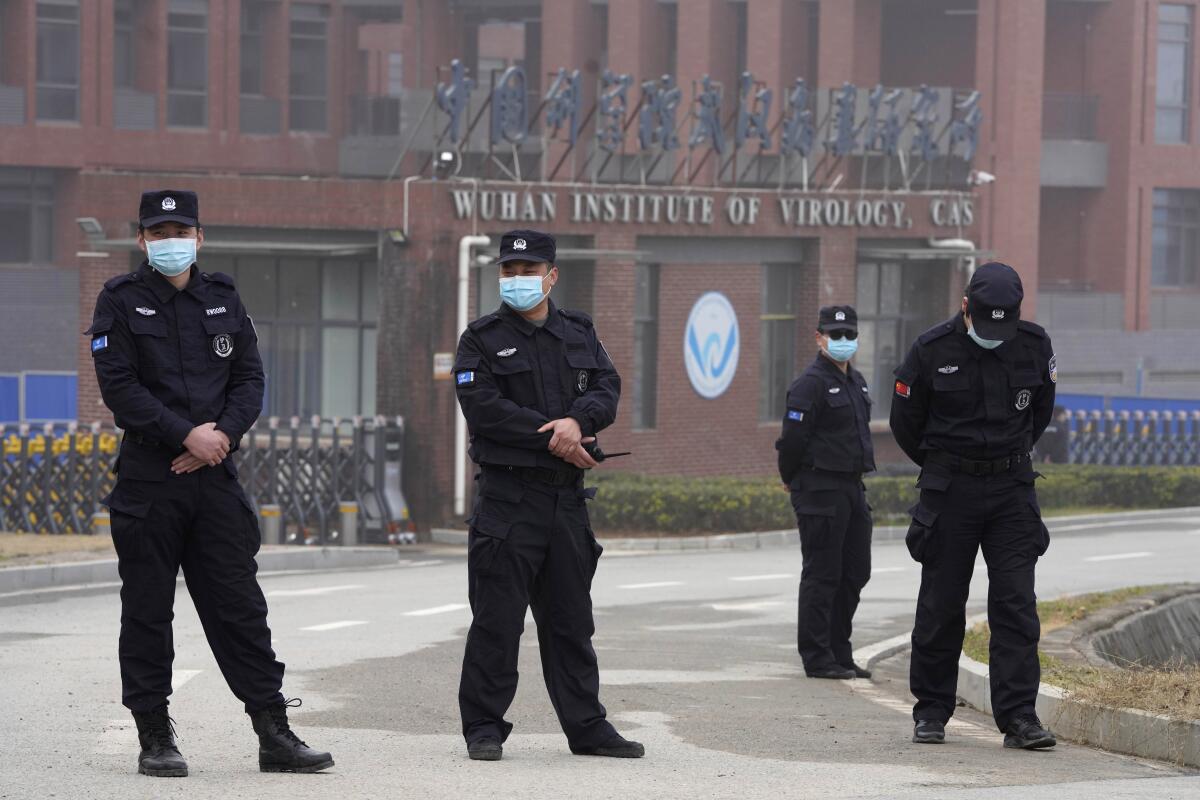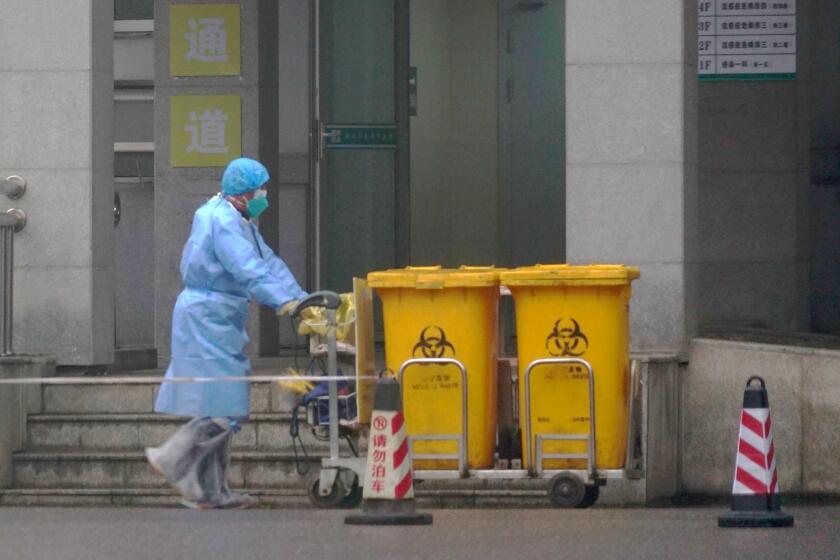COVID-19 origins remain a mystery, declassified report shows

U.S. intelligence agencies weren’t able to determine whether researchers at laboratory in Wuhan, China, who fell sick in the fall of 2019 were infected with the coronavirus that causes COVID-19, the disease that soon spread around the world, according to a declassified report released Friday.
The Office of the Director of National Intelligence unveiled details about scientists at Wuhan Institute of Virology who fell ill in 2019 before the first documented COVID-19 illnesses, as well as coronavirus research conducted at the lab by the Chinese People’s Liberation Army. However, none of the released intelligence definitively pointed to lab-related work as the cause of the pandemic, which has caused nearly 7 million deaths.
The report comes months after President Biden signed a bill into law requiring declassification of intelligence related to the pandemic’s potential links to the lab. It will do little to settle the hotly contested debate over how the COVID-19 pandemic started, a topic that’s already the source of partisan clashes and probes.
It’s also far from the final word on how the pandemic got its start. Intelligence officials have said they’re still seeking key information from China.
Two new studies build on evidence that the coronavirus that causes COVID-19 jumped to humans in a Wuhan market, and did so twice.
“When President Biden signed the COVID-19 Origin Act, he directed the intelligence community to use every tool at its disposal to investigate the origin of COVID-19,” White House National Security Council spokesperson Adam Hodge said in an emailed statement. “The release of this report reflects that commitment to declassify and share as much information as possible related to the origins of COVID-19, while protecting sources and methods.”
The U.S. had issued similar reports previously, and “origins-tracing of COVID-19 is about science and should not be politicized,” said Liu Pengyu, spokesman for the Chinese embassy in Washington.
“The U.S. should stop rehashing the ‘lab leak’ narrative, stop smearing China and stop politicizing origins-tracing issue,” Liu said in a statement. Experts of the World Health Organization-China joint mission had authoritatively concluded a lab origin of the pandemic was considered to be extremely unlikely, he said.
A close analysis of Wuhan’s earliest COVID-19 cases points to a live-animal market as the most likely source of the novel coronavirus, a study argues.
The new report builds on prior findings, including a State Department report from January 2021 that suggested that the U.S. government had reason to believe that several researchers inside the Wuhan lab became sick in 2019 with symptoms consistent with COVID-19 and with common seasonal illnesses.
The ODNI report stated that there is no indication the researchers were hospitalized due to COVID-19, and that the intelligence community couldn’t confirm if any of the researchers had handled live viruses before falling ill.
The report acknowledged that Wuhan researchers have collaborated with the People’s Liberation Army on public-health research that included coronaviruses — and vaccines and treatments for such viruses — though no known research that could have led to the emergence of SARS-CoV-2, as the pandemic virus is officially known.
Some scientists at the Wuhan institute have genetically engineered coronaviruses using common lab practices, the report said, adding that it’s not aware of manipulations of viruses that could have been the source of SARS-CoV-2.
The report also identified safety and security issues at the institute that could have increased the risk of accidental exposure to viruses. The intelligence community said it’s not aware of a specific biosafety incident that may have spurred the pandemic.
Contrary to conclusions by the Department of Energy and the FBI, the science on the pandemic’s origins stacks up in favor of a jump from animals to humans.
To date, the U.S. intelligence community has shared few details about the information it’s gathered since the outset of the pandemic.
Last year, the agencies concluded two scenarios were plausible: The virus emerged in animals and spread to humans, or that it sprang from an incident at a lab in Wuhan. Despite disagreement among the agencies about which hypothesis was more likely, the intelligence community concurred that COVID-19 wasn’t developed intentionally as a biological weapon.
The FBI and the Department of Energy have both said, with low-to-moderate confidence, the lab-leak theory is possible. That’s remained a minority view, and most other groups consider human exposure to an infected animal more likely.
The report also said most, but not all, of the intelligence agencies ruled out that COVID-19 was genetically engineered or lab adapted.
With assistance from Madison Muller.









